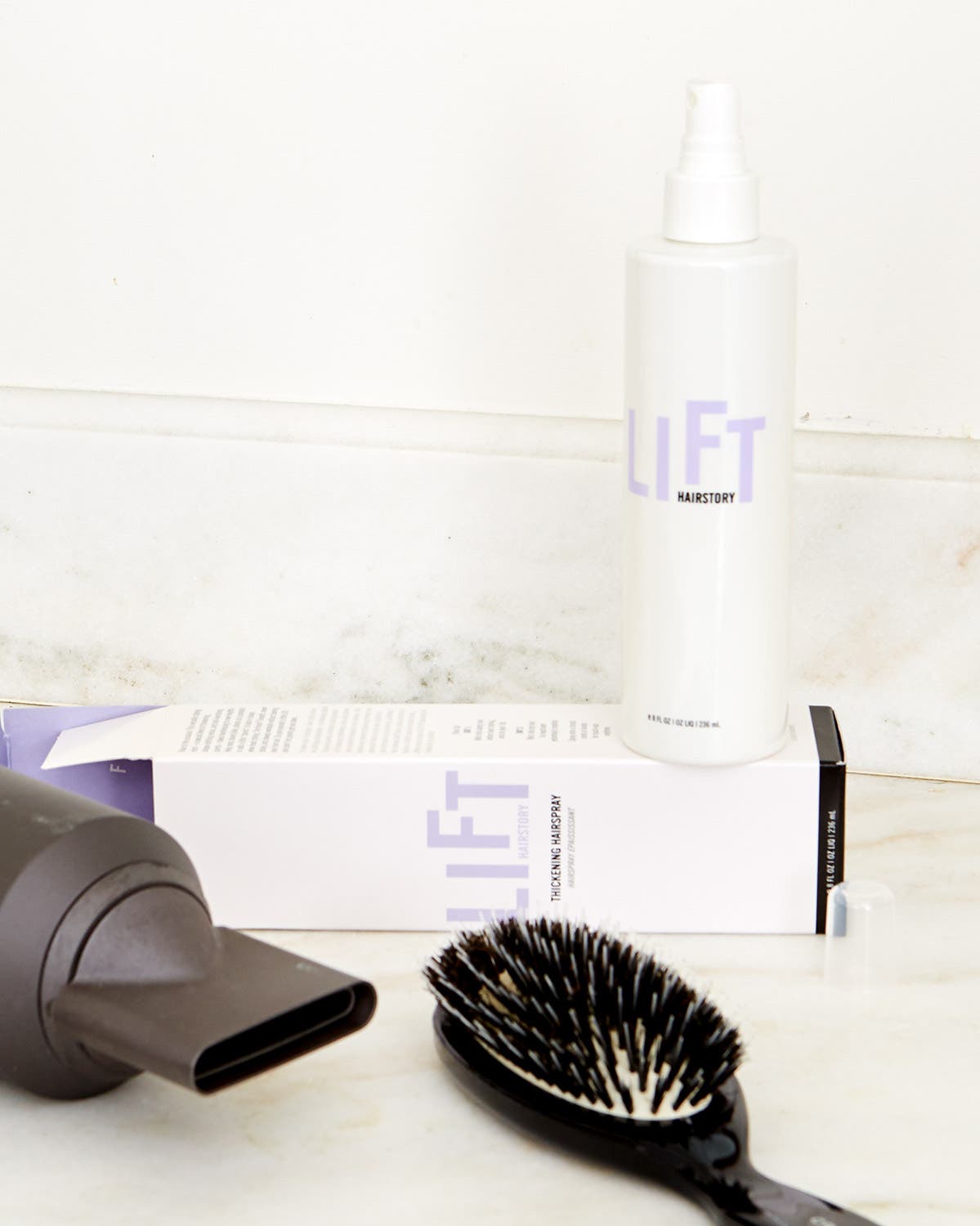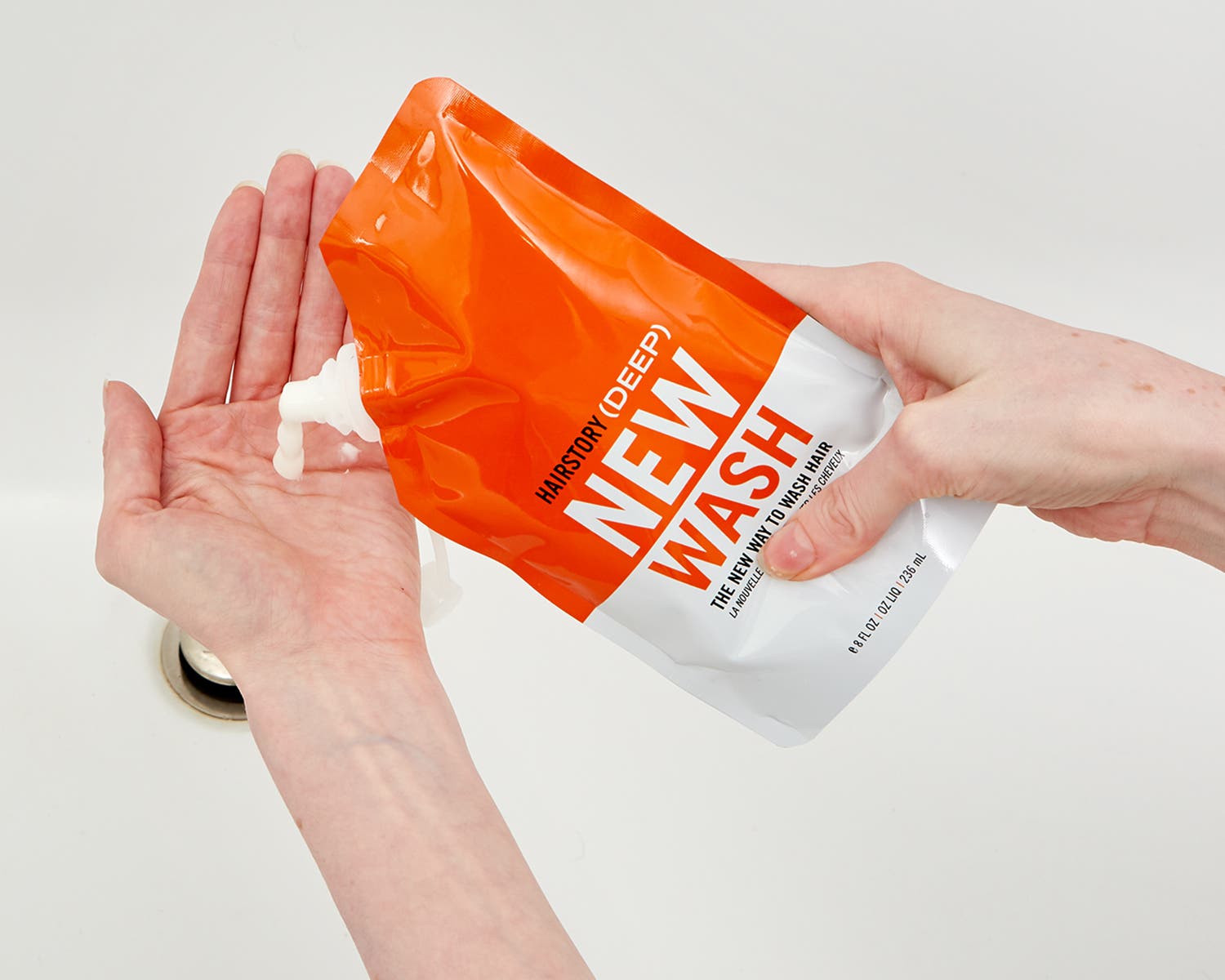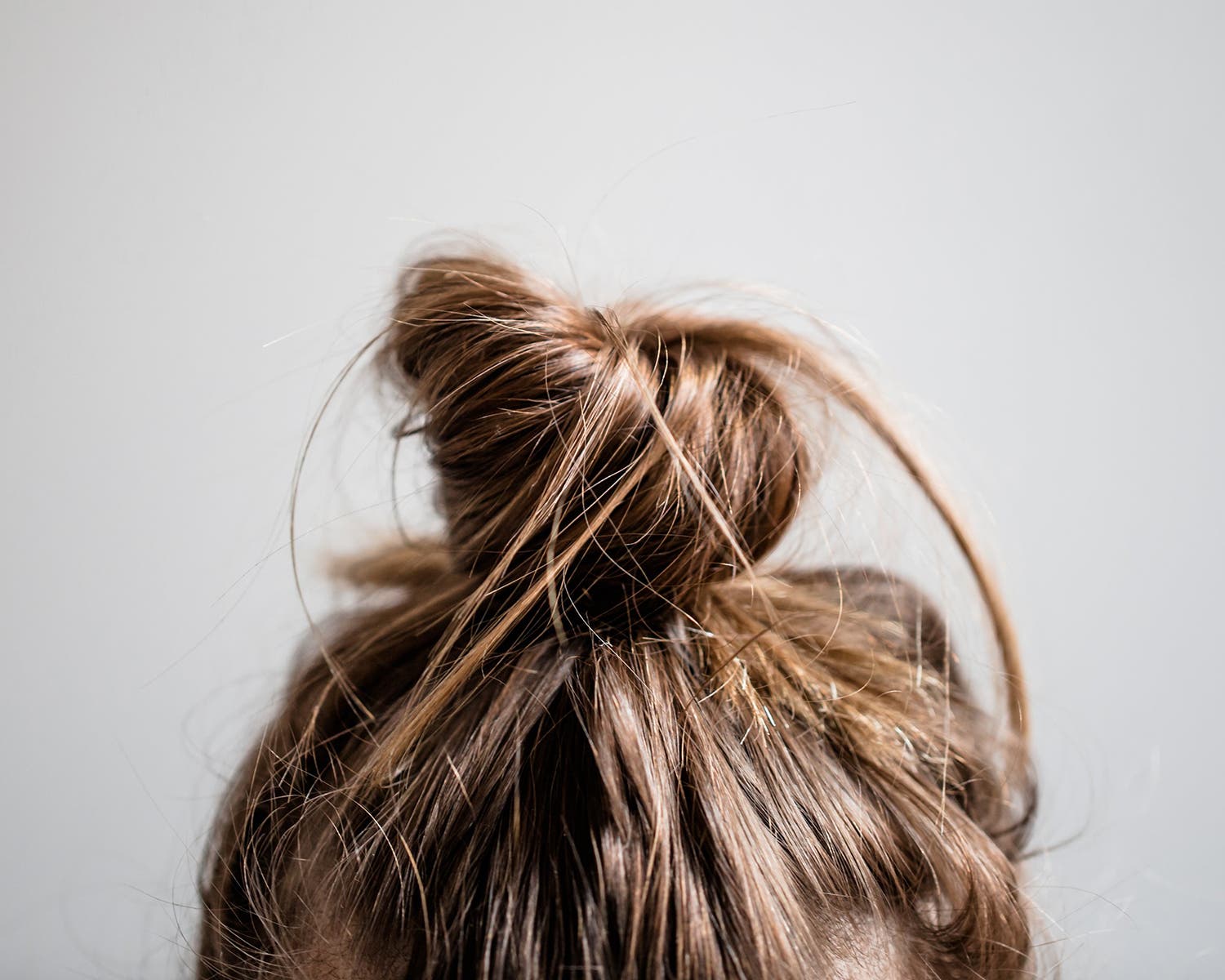If your scalp is excessively oily and your hair is showing it, it’s trying to tell you something. It might be saying, “Honey, I was born this way,” or “Dermatitis has gotten me down.”
First, the natural oil your scalp produces – sebum – is a good thing. Without it, your skin would look like leather and your hair like tumbleweed. But too much of a good thing is – well, too much. It’s important to note that the amount of oil you produce changes over time and generally decreases as you age. No matter your age, here are some helpful tips to combat an oily scalp.
This would mean quitting shampoo, the stuff we’ve used to wash hair with for decades, and living without conditioner. Well, you wouldn’t be called hairbrained; many people practice this alternative method to hair cleansing what is known as water-only hair washing, or the WO method.
OIL: WHAT IS IT AND WHY IS IT IMPORTANT?
Microscopic sebaceous glands secrete a waxy oil called sebum. Sebum is our natural moisturizer that softens and waterproofs our skin and hair, among other things. We have the greatest number of glands on the face and scalp, and none on the palms of our hands and soles of our feet.
Each cluster of glands deposits sebum, which travels to the skin surface along the hair shaft. Sebum also plays an important thermo-regulatory role: in hot conditions, it emulsifies sweat and delays dehydration. In cooler conditions, sebum coats the skin in a less liquid form to repel chilling rain.
Sebum is our natural moisturizer that softens and waterproofs our skin and hair, among other things.
Sebaceous glands also serve to protect the body against bacterial and fungal infections by secreting acids that form a thin film on the skin, acting as a neutralizing barrier to microbes. Sebaceous lipids also help maintain our supply of vitamin E, an important antioxidant that deals with the by-products of all this chemical activity.
When sebaceous glands overproduce, it causes oily scalps and skin, a condition that is known medically as seborrhea and can result in seborrheic dermatitis. When not enough sebum is produced, skin and hair become dry.
HOW SEBUM PRODUCTION WORKS
Sebum production is controlled by hormones – specifically, androgens like testosterone and estrogen. Testosterone has been shown to stimulate secretion, and estrogens have been shown to inhibit secretion. During puberty, sebaceous glands enlarge, hormones become more active, more sebum is produced; boys may produce up to five times more sebum than girls. Sebum production starts to decrease by age 20 and continues to slow with age.
Sebum can also be affected by certain diseases. Disorders related to the pituitary and adrenal glands or reproductive organs can increase or decrease sebum production. Starvation reduces production, and Parkinson’s disease increases it. Fluctuations can also be caused by pregnancy, puberty, menopause, and stress.
Certain medications such as oral contraceptives, antiandrogens, and vitamin A derivatives are all known to reduce sebum production. Others, such as testosterone and progesterone, are known to increase sebum production. A vitamin-B deficiency can also have an effect.
Several medical conditions involving sebum such as acne, sebaceous cysts, hyperplasia, and sebaceous adenoma, are usually due to overactive glands producing excess sebum.
YOUR HAIR AND YOUR SEBUM
The reason that people with fine hair are more likely to complain about oiliness is simple: There may not be enough hair to fully absorb the amount of sebum their scalps produce. Straight hair tends to look oilier because the sebum travels easily from roots to tips without curls or kinks as obstacles. Fine, straight hair can spell double trouble. People with curly or oily hair complain of oiliness at the roots and dryness at the tips because oil builds up close to the scalp, and because curls act as obstacles, it doesn’t travel as efficiently down the hair shaft.
HOW TO GET RID OF OILY HAIR: DOS AND DON’TS
If you experience what you feel is excessive sebum – whatever the cause – here are 12 simple ways to manage it:
1 Use cool water in the shower.
Use cool water in the shower. Hot water stimulates sebaceous glands and encourages them to produce more sebum. Your skin elsewhere will appreciate it too, especially as you mature. Try rinsing hair with cool water to close your hair cuticles and prevent glands from going into overdrive. Use a scalp massage brush to distribute the oils evenly throughout your hair while you shower.
2 Avoid daily shampooing.
Daily shampooing, in fact, can worsen your hair’s oily condition. Detergent strips your scalp of sebum – and your glands do an admirable job of replacing them as quickly as possible. It’s a vicious cycle that you’ll never be able to shampoo your way out of.
Daily shampooing can worsen your hair’s oily condition. Detergent strips your scalp of sebum – and your glands admirably replace them as quickly as possible.
You can train your hair to be less greasy. How? It takes patience but gradually stretch the time between washes to give your scalp time to recalibrate its sebum workload. Try washing no more than 2 to 3 times a week. Ease into it by replacing one of your wash days with a rinse day – just water, no shampoo.
If you’re oil-prone, try a natural dry shampoo to extend the time between washes. Look for those with a loose, fine powder that you can shade onto hair invisibly. Avoid powders disguised as texture sprays that make your hair feel “dirtier.” If your roots get extra greasy, apply dry shampoo immediately after you've freshly washed and styled your hair so it’s ready to start working the minute it’s needed. Hairstory Powder gets raves reviews for its versatility and ease.
Your best course of action is to quit shampoo altogether! You can wash in a kinder, gentler way without detergent at all. New Wash (Deep) – made with apple cider vinegar and Argan oil especially for oilier types – sends a different signal to your glands and lowers the threat level from a constant code-red. To get a deep clean for your oily scalp without damage, use our scalp massage brush.
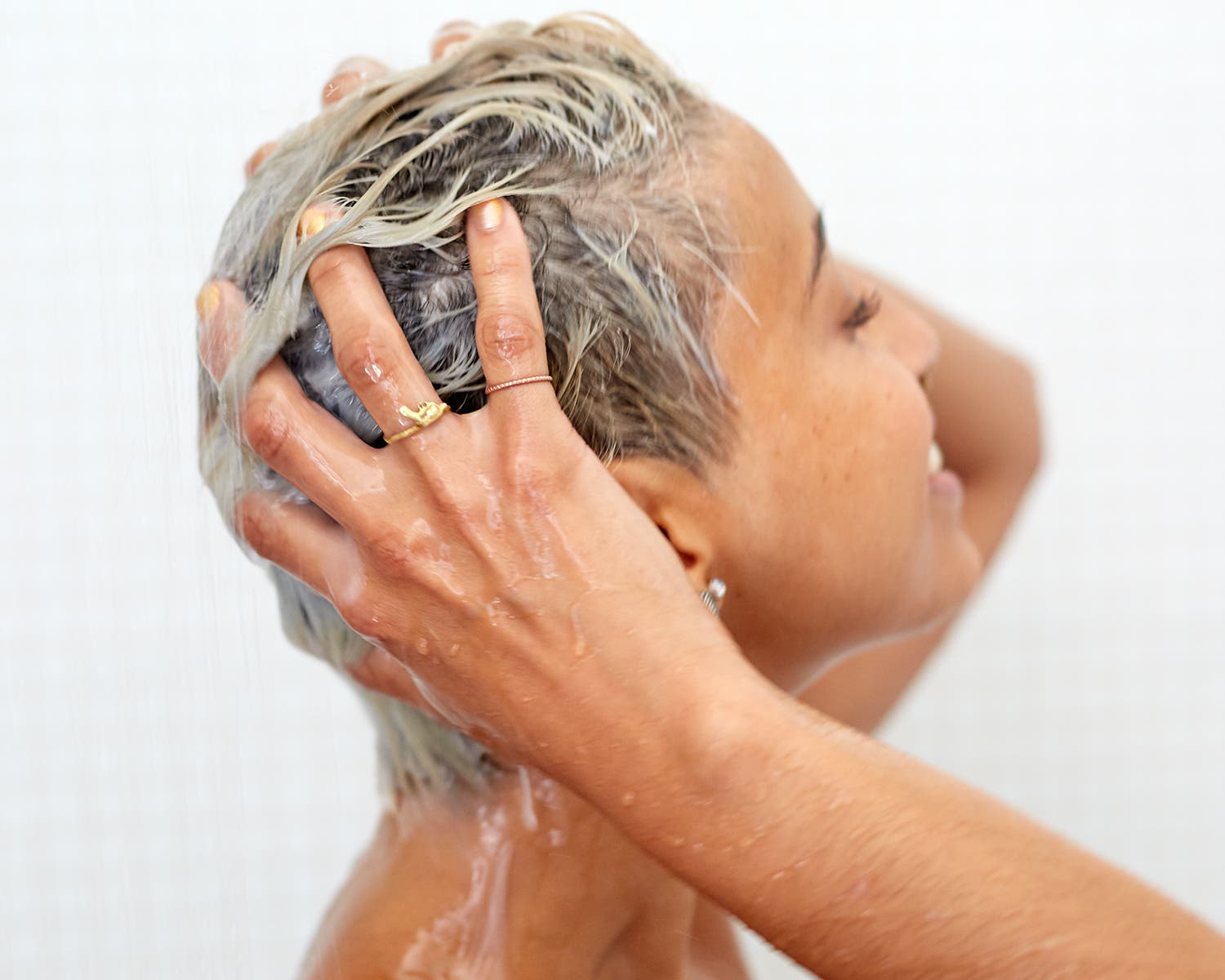
And those anti-dandruff shampoos? Consider them a last resort as they can be harsh on your hair, and let’s face it: they smell awful.
3 Wash well.
It is possible to wash your hair and still end up with an oily scalp. Some people tend to focus their attention on dry ends and forget about the roots. The opposite approach is best:
Gently massage your cleanser into your roots and scalp with your fingertip pads or a shower brush. Avoid using your nails or creating unnecessary friction that can irritate your scalp. Focus on your scalp, where the oil is, rather than on the length. Let it flow to the ends as you rinse.
4 Rinse properly.
Spend an extra minute or two under the water stream to make sure you rinse everything out of your hair thoroughly. This can make a big difference in how your hair looks and feels.
5 Condition selectively.
Conditioner can contribute to making your hair look greasy quickly. Apply your balm of choice to the ends of your hair and the areas that actually need it. Rest assured that your natural oil is taking care of what’s closest to your scalp just fine, thank you. Be sure to thoroughly rinse.
6 Brush smartly.
Brushing helps spread sebum along the hair shaft with every stroke. If your hair is dry, that’s a good thing. But if it is oily, brush only when you need to, and to avoid abrading the scalp, invest in one with boar bristles.
7 Clean your hair tools.
Always use clean brushes, combs, rollers, and curling irons, free of residue from conditioners and styling products – and sebum. Clean your brushes of hair, and wash brushes and combs once a week using a mild cleanser, and air-dry to avoid damaging the bristles. Swab curling and flat irons regularly with cotton balls soaked in alcohol.
8 Mind your ponytails.
Tying hair back in a ponytail is practically automatic, but when you think about it, this default style can make hair look greasier as oil and dirt get trapped underneath, and rubber bands serve as dams and reservoirs so that grease can pool on your scalp instead of spreading down the hair shaft.
9 Avoid too much touching.
The more you play with your hair, the oilier it will look.Fiddling transfers skin oils from your fingers to strands;This means lock twirling, head-scratching, running fingers through your hair can all make your hair look oilier. Whether you are the fondler or the lucky one being fondled, hands off!
When you’re washing, brushing, styling, or scratching, it’s important to be extra gentle. Abrasions to the scalp are signals to your scalp to produce more oil. Light scalp exfoliation is okay, just be sure to keep it gentle.
10 Keep your pillowcase clean.
Change your pillowcase regularly. Oily linens can transfer oil back to your hair – and aggravate facial acne if you’re prone to it.
11 Avoid styling products with silicone.
Many, including shampoos, conditioners, creams, and styling products, are made with silicone to add extra gloss and collapse frizz. Silicones, such as cyclomethicone, amodimethicone, and the most common, dimethicone – can build up on hair and make it look oily, and build up in follicles and compromise healthy growth.
Go for hairstyles that lift your hair away from the scalp and allow limited contact with the place where oil originates – and keep it away from the skin on your face and neck, especially if you've used moisturizers there. Appropriately named, Hairstory Lift helps you do just this when blow-drying – without overwhelming fine hair.
Embrace the topknot. On the days you just can’t fight it, join it with sleek, slicked-back looks. Use the oils in your hair to your advantage and add Hair Balm or Wax for control. An added bonus is removing the possibility of being able to run your fingers through it.
12 Mind your headwear.
You may be wearing hats, helmets, scarves, and headbands to hide your oiliness, but they too can also spread oils and trap heat. Lose the hat hair with a quick rinse.
TREATING YOUR OILY SCALP
Several simple ingredients have been shown to help with an oily scalp. Some you may already even own. Here are a few treatments to improve scalp health.
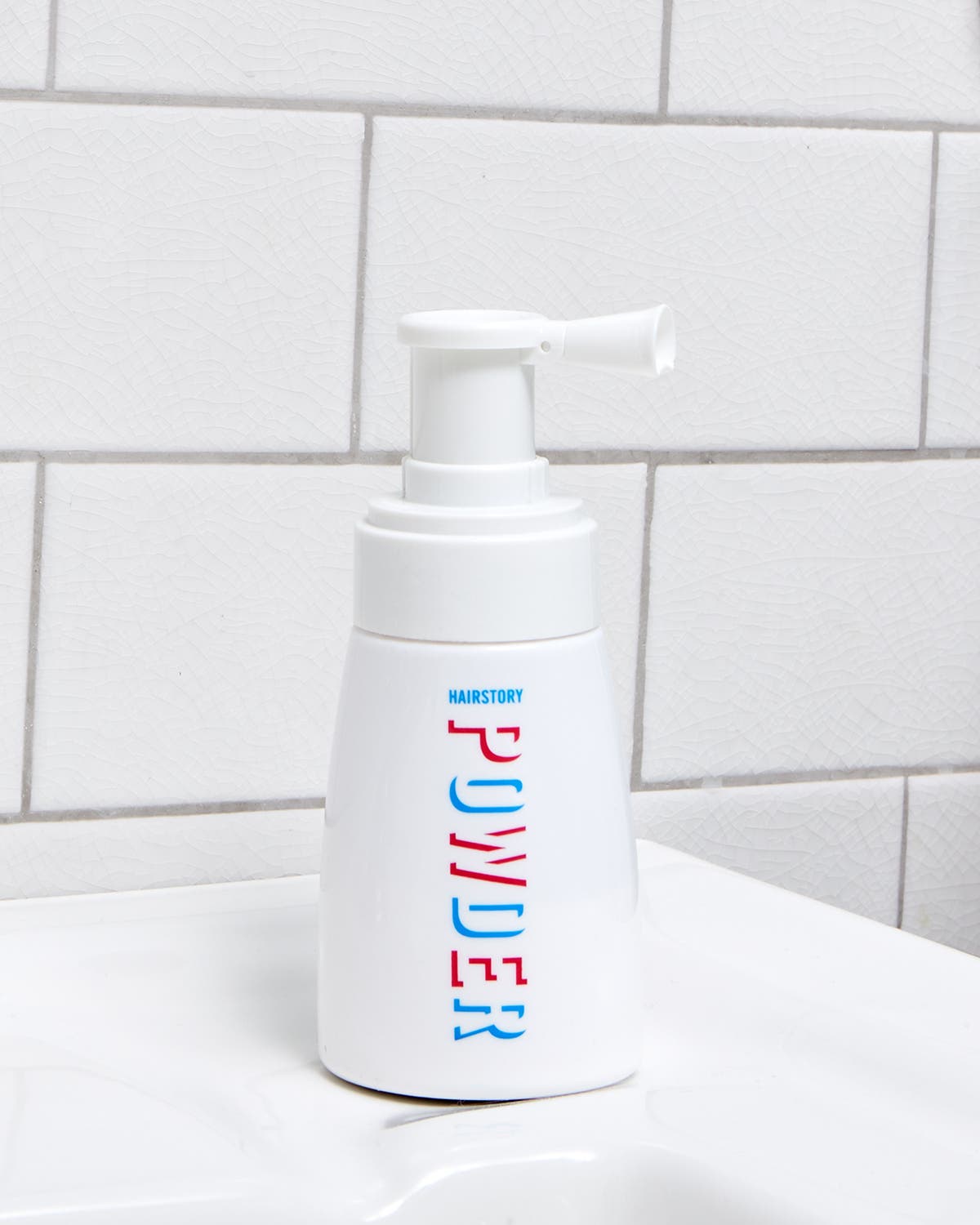
A cold water rinse helps close your hair cuticles after warm water opens them up, which helps hair look shinier and retain moisture. As you dial down the temperature, fling all of your hair over your head, and stick only it under the stream. If you weren’t awake before, you will be now!
Apple cider vinegar
When properly diluted, an apple cider vinegar rinse can help remove product buildup, balance scalp pH. Some say it’s an effective anti-inflammatory and can help balance your pH; both may help reduce oil production and limit flare-ups of skin conditions. However, apple cider vinegar may further irritate your skin if you have eczema.
Tea tree oil
A study found that antibacterial tea tree oil improves dandruff, reduces itchiness, and improves greasy hair. Always dilute tea tree oil with a carrier oil, such as coconut or olive oil, and put a few drops on the affected area.
Witch hazel
Witch hazel can relieve itching, close oil-producing pores, and reduce inflammation caused by dandruff, pH imbalance, or other scalp disorders. It’s also gentle enough to use on a sensitive scalp.
Green tea
Green tea extract has been shown to reduce sebum production and nourish skin when applied topically, making it a great treatment for oily skin and greasy hair.
Honey
A honey mask can help soothe your scalp and prevent or treat dandruff thanks to its antibacterial and antifungal properties. One study found that a simple mixture of 90% raw honey and 10% water helped reduce symptoms of seborrheic dermatitis, like itching, redness, flakiness, and excessive oil production.
IN CONCLUSION...
Remember that oiliness is not some cruel joke Mother Nature thought up to thwart your vanity. It’s the result of a highly sophisticated process that does your body more good than harm, and balance is key. If you suspect that you may have an underlying condition preventing any of these tips from helping you, see your doctor, dermatologist or endocrinologist (hormone specialist) for some peace of mind. Meanwhile, let us know how it goes.


